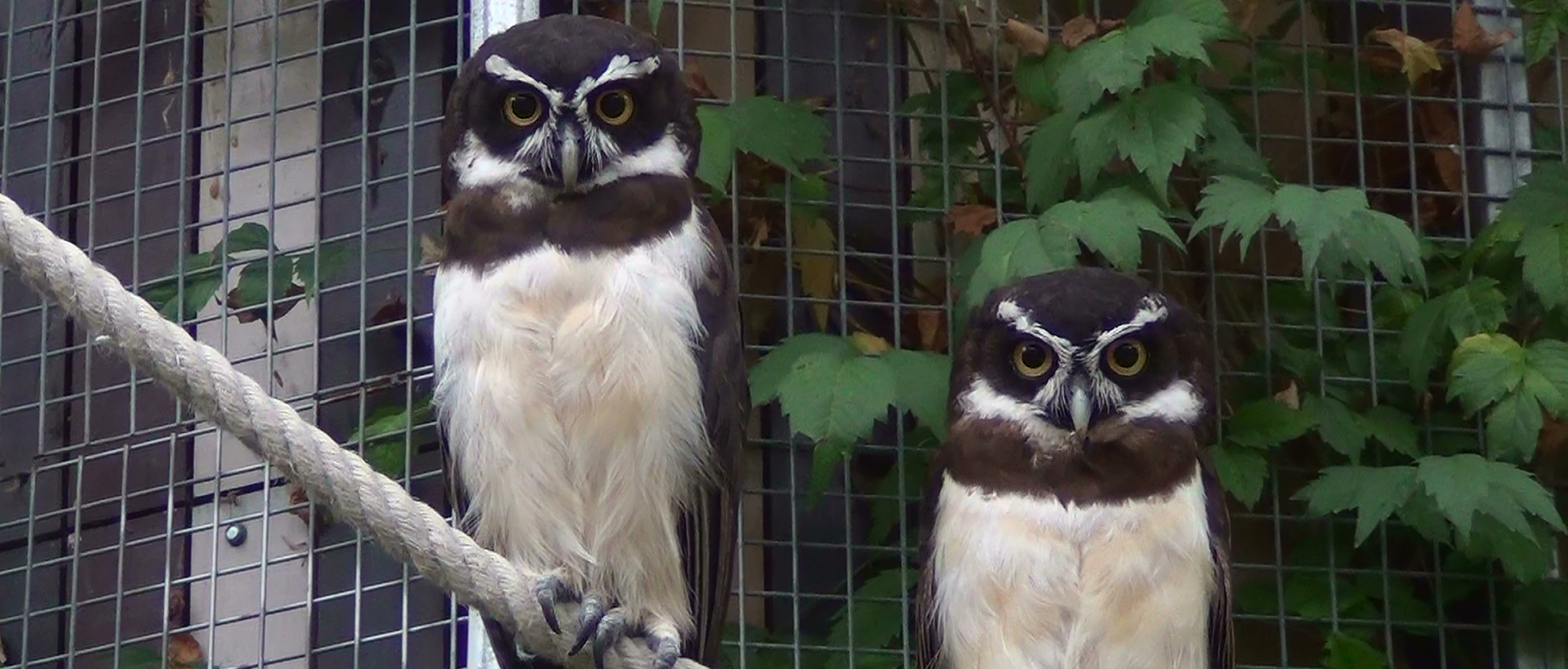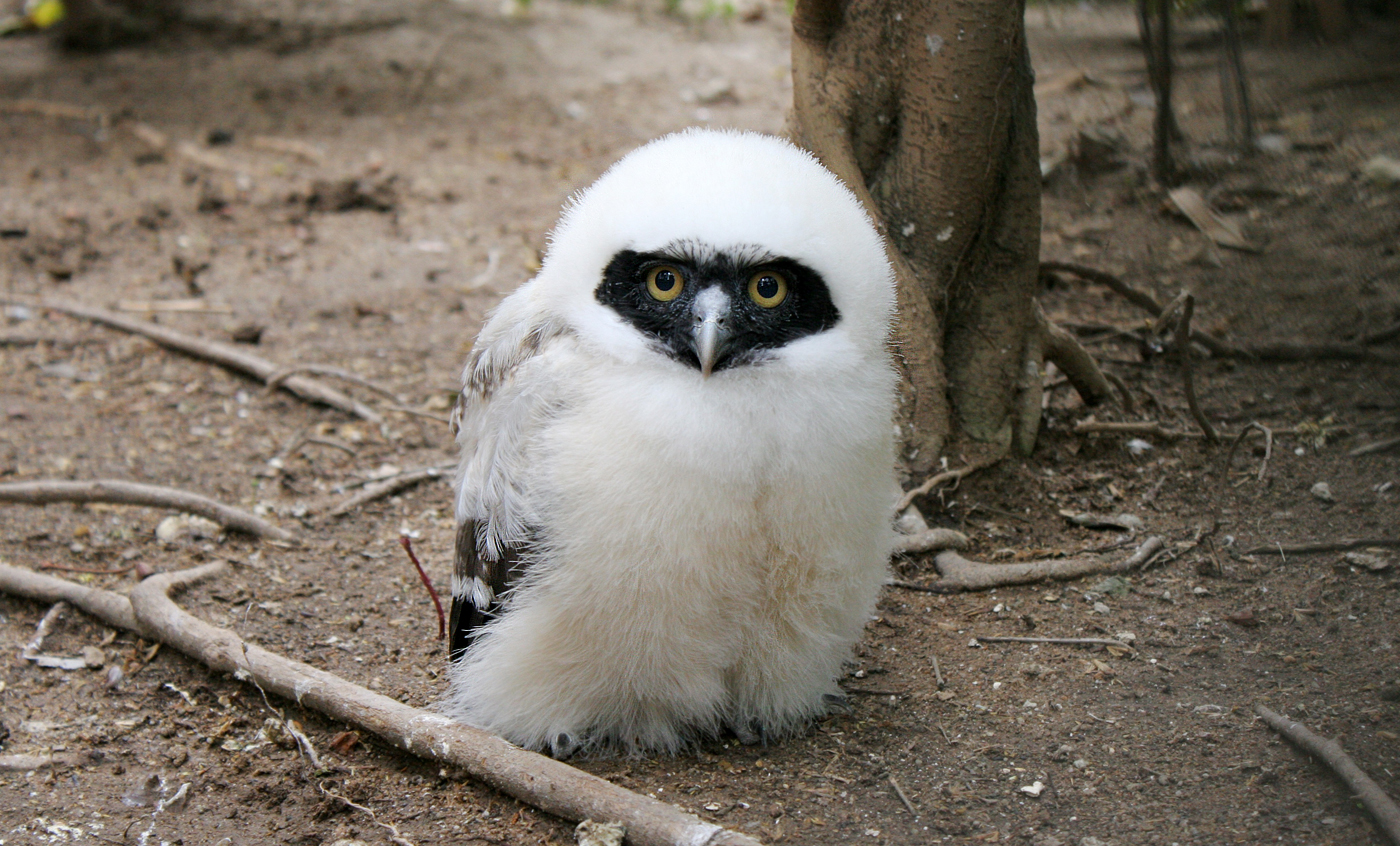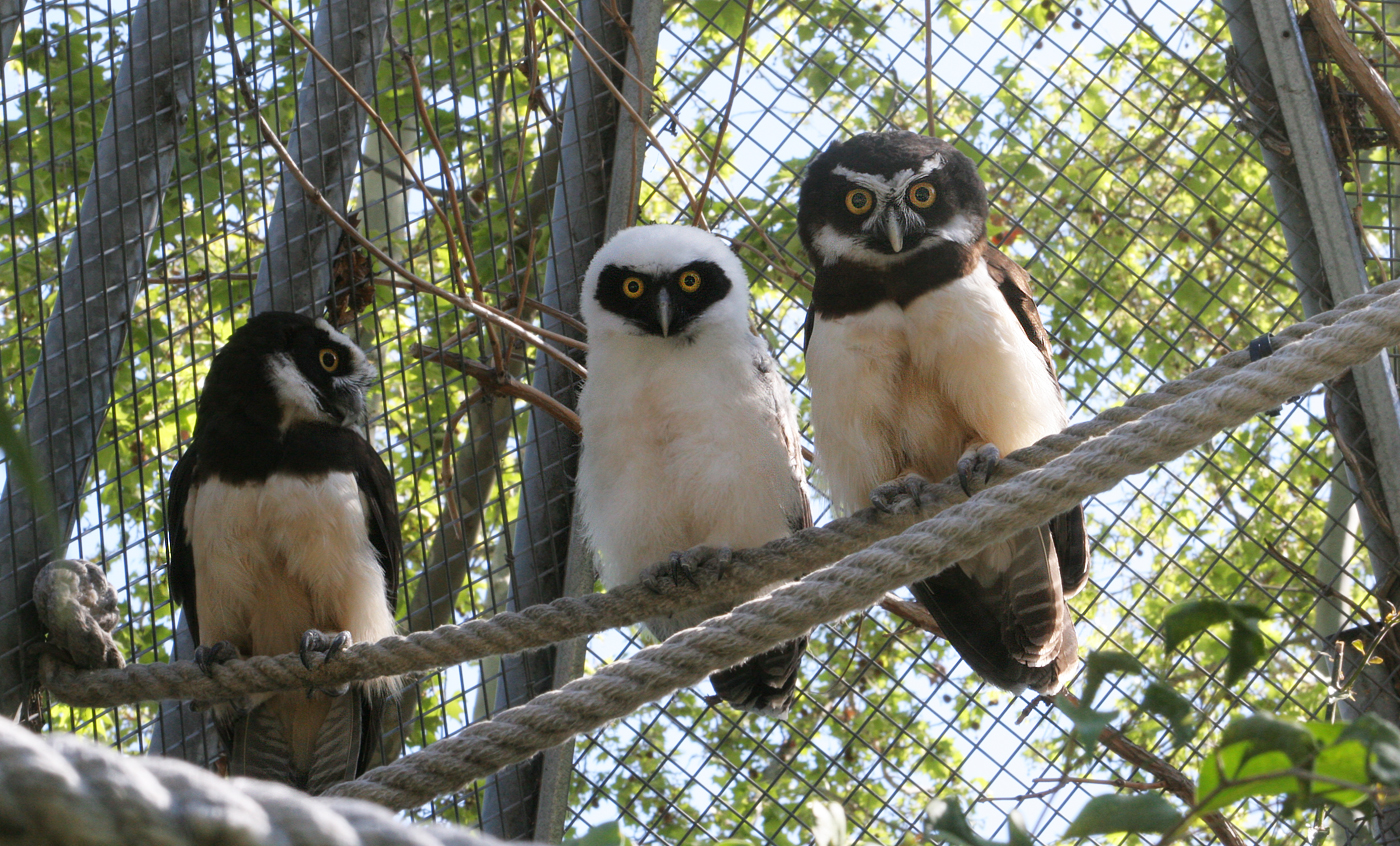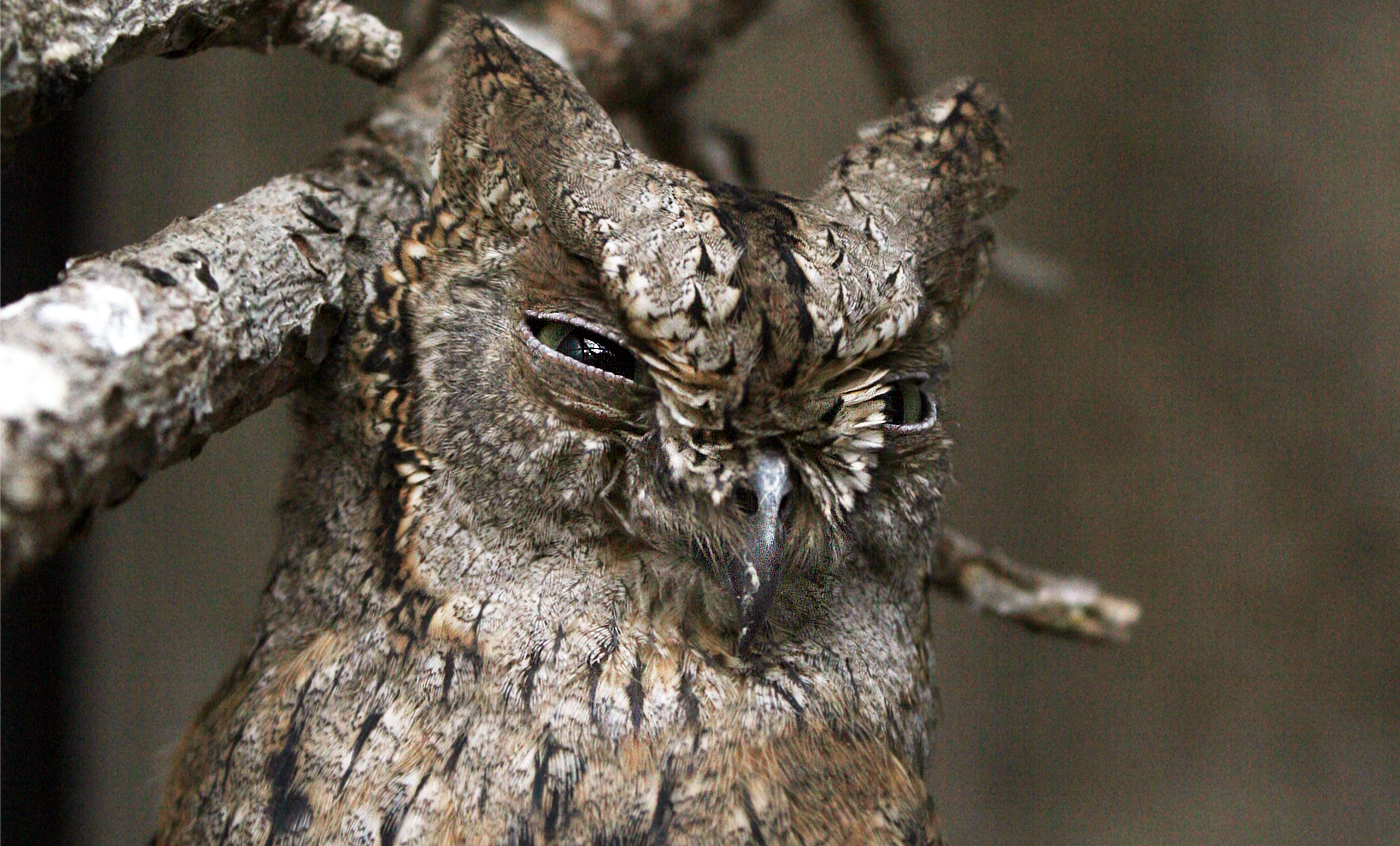Spectacled owl
The spectacled owl is a large bird of prey that can measure up to 50 cm in length with a wingspan of nearly a metre. It lives in a range of habitats in Central and South America, from tropical rainforests to savannahs with scarce tree cover between sea level and 1,600 metres in altitude.
It is a nocturnal hunter that feeds on small mammals, birds, insects, frogs and crabs, which it catches by stalking.
Natural habit
Woods and forests from southern Mexico to northern Argentina
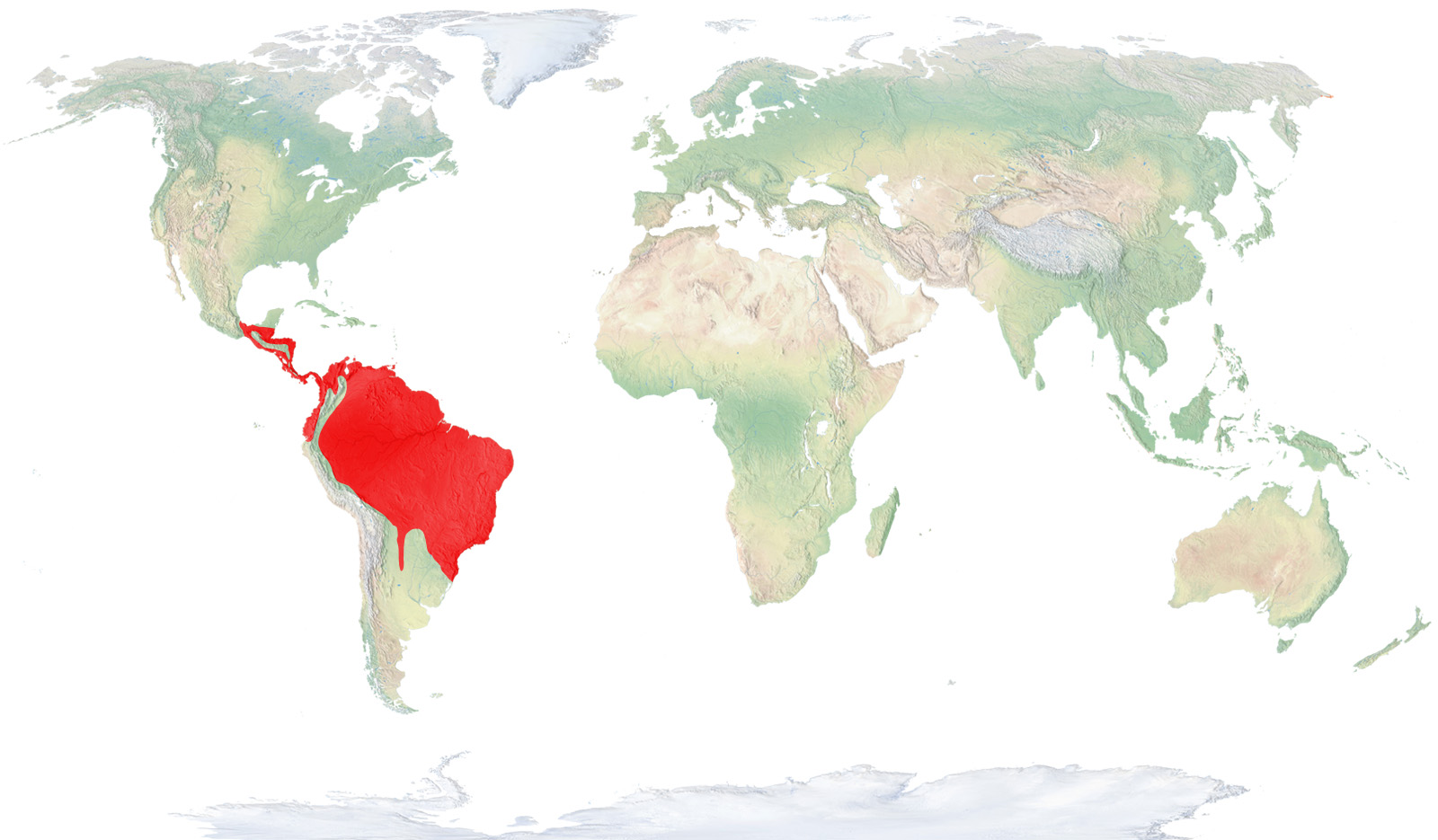
- Distribution / Resident
- Breeding
- Wintering
- Subspecies
Risk level
- Extint
- Extint in the wild
- Critically endangered
- In Danger
- Vulnerable
- Near threatened
- Minor concern
- Insufficient data
- Not evaluated
Taxonomy
Physical characteristics
Biology
Reproduction
Biology
The spectacled owl is a large bird of prey, which can be up to 50 cm long with a wingspan of almost one metre. It is characterised by its coffee colour, cream breast and belly, and its white feathers on its eyebrows and above its beak, creating a type of glasses around its eyes.
The spectacled owl is a large bird of prey, which can be up to 50 cm long with a wingspan of almost one metre. It is characterised by its coffee colour, cream breast and belly, and its white feathers on its eyebrows and above its beak, creating a type of glasses around its eyes.
This nocturnal hunter feeds on small mammals, birds, insects, frogs and crabs, captured by perching on a branch and swooping down.
Its breeding season starts between April and June, until the end of the dry, and beginning of wet, season. It builds its nest in holes in trees, sometimes stolen from other species such as woodpeckers and toucans, in which it lays two eggs that are incubated for five weeks.
Resident and sedentary.
Despite not being endangered, and considered quite common in the majority of its distribution area, the destruction of its habitat from deforestation and the degradation of wooded habitats have led to it starting to have difficulties and negative outcomes for breeding and numbers.



